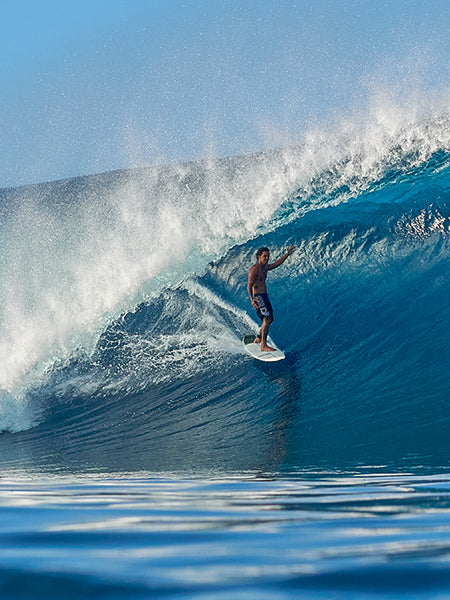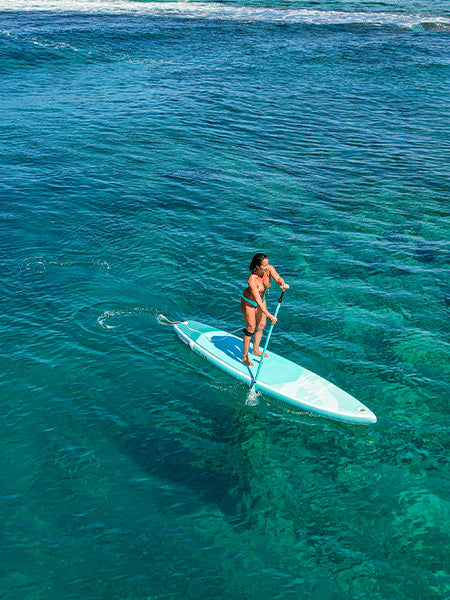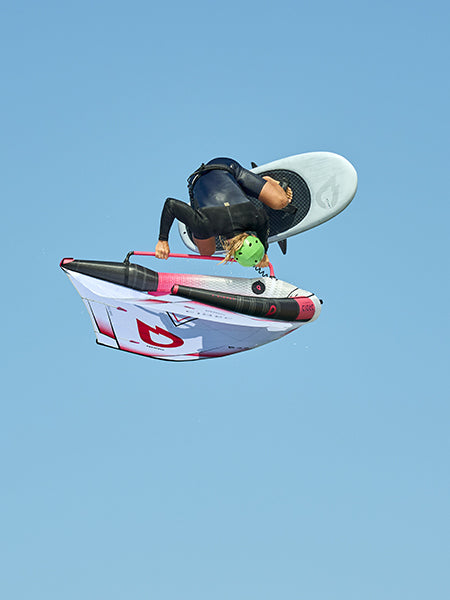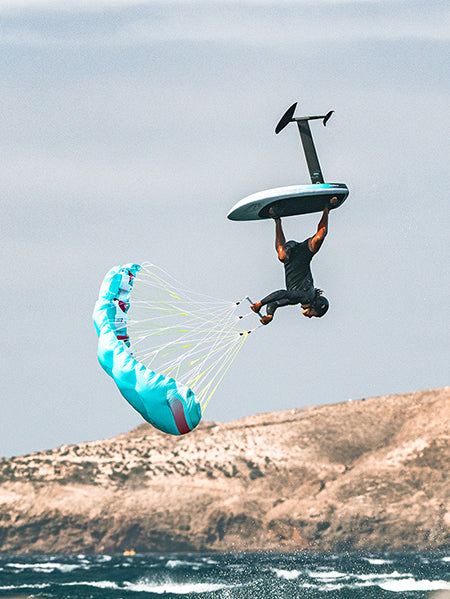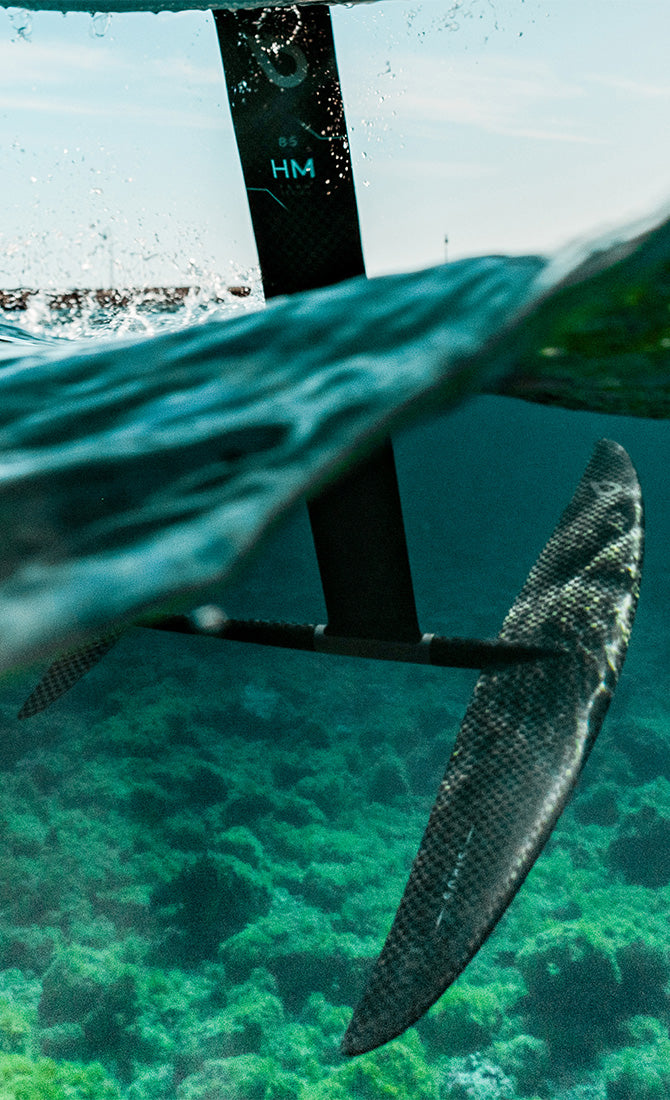Grab your wing
Your first flight will be the result of a succession of correctly executed steps. With practice, these will happen naturally. Our complete How To covers the 7 steps you need to acquire to launch your first flight and all the following ones.
 Wing foiler : Laury, GONG staff, on HIPE Learn, wing Plus and X-Over foil.
Wing foiler : Laury, GONG staff, on HIPE Learn, wing Plus and X-Over foil.
Today we are focusing on the key points of step 4: grab your wing.
- Your kneeling position is balanced thanks to the Wing in the water downwind of the board. Your chest is bent forward and you manage the movements of the choppy water.
- The hand that holds the Wing by the carrying handle, the one on the leading edge, is ideally the rear hand. If that’s not the case at first, the rear hand will have to replace the front hand on the carrying handle when lifting the wing.
- This hand can lift the wing up to your face.
- The front hand, so the one that’s free, grabs the front ride handle, the first on the central strut.
- The rear hand lets go of the carrying handle and grabs the rear handle.
- Warning: do not advance the wing too far in front of you because when placed in front of the anti-drift plane (the foil), it will make you bear off and eventually fall. So leave it rather behind you, towards the tail of the board, without sheeting in. It’s tricky at the beginning ?
- In this position you can steer your board by pulling the wing back to luff (go upwind), or by moving it forward to bear off.
- Trick: if the central strut is parallel to the wind, the wing remains neutral, like an umbrella. As soon as you break this parallelism, by advancing the front hand more than the back hand for example, the central strut forms an angle with the wind and the wing immediately tilts vertically. This is the only thing to understand in wing foiling. The wing switches to full power when vertical. The tip of the wing catches the water and it’s a guaranteed splash!
- In this case, you must immediately let go of the back hand. Otherwise you will have to start all over again.
- The position to keep the central strut parallel to the wind is uncomfortable. If you’re comfortable, you’re doing things wrong ? In addition, keeping the central strut in line with the wind while advancing it to bear off or moving it back to luff is a bit complicated, but it comes quickly. Learn to navigate like this. It will save you a lot of time afterwards
